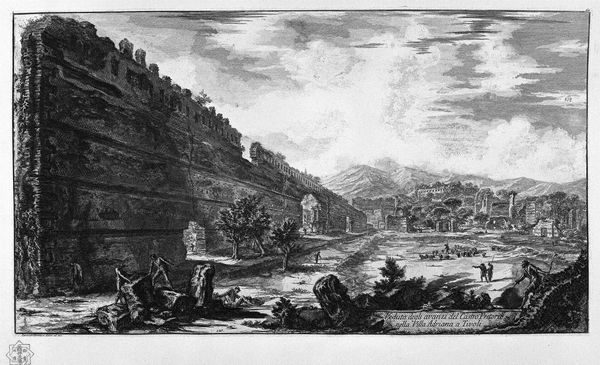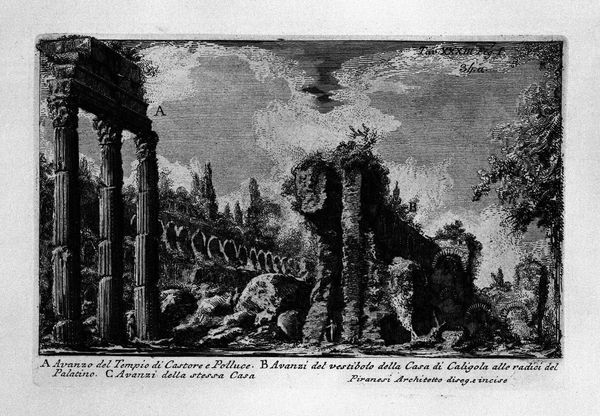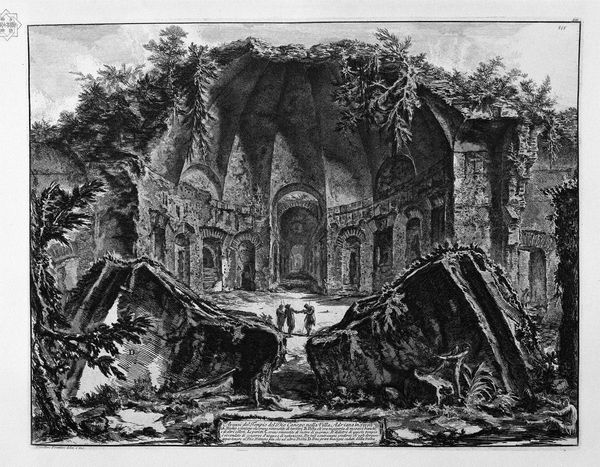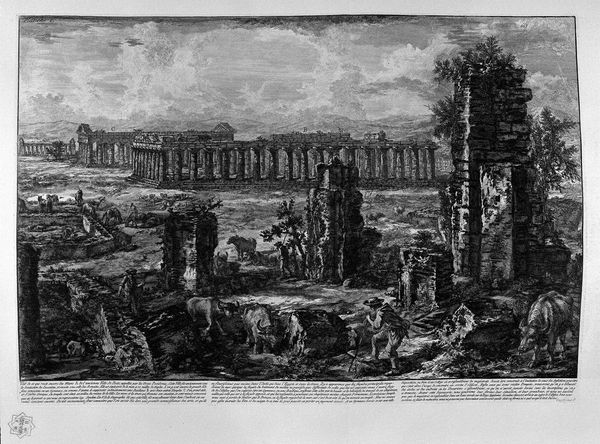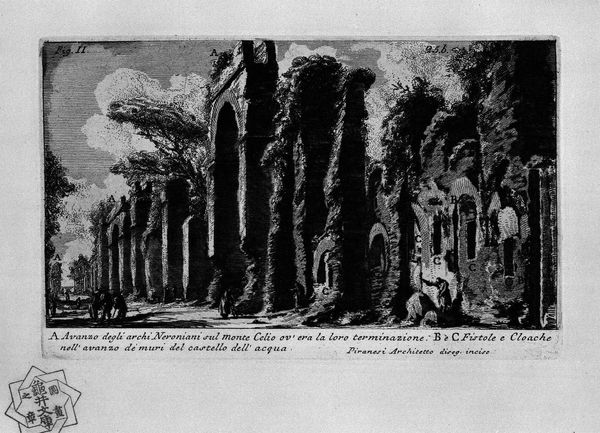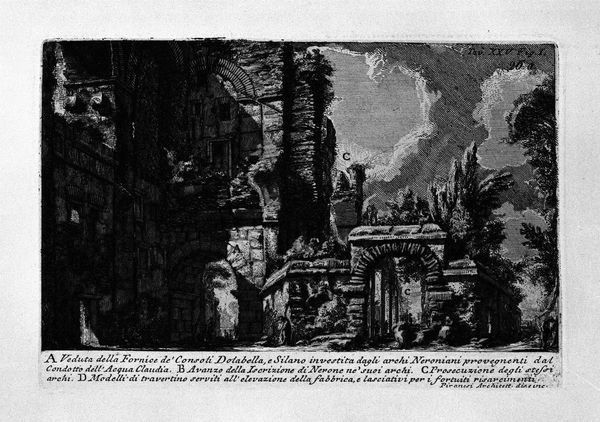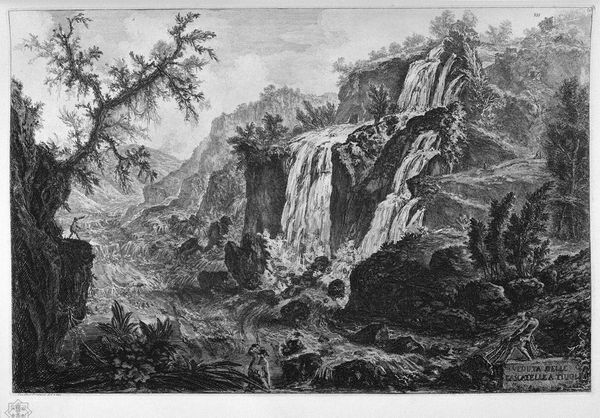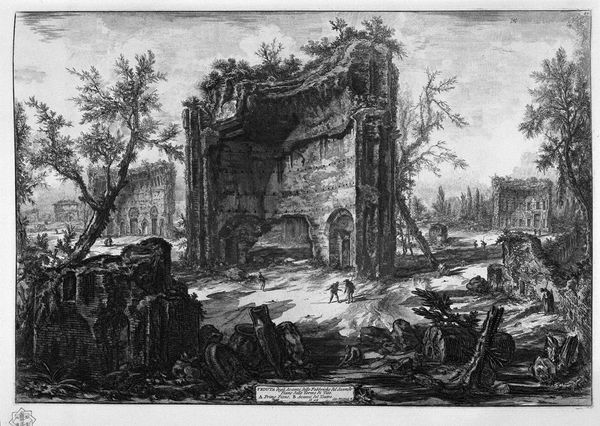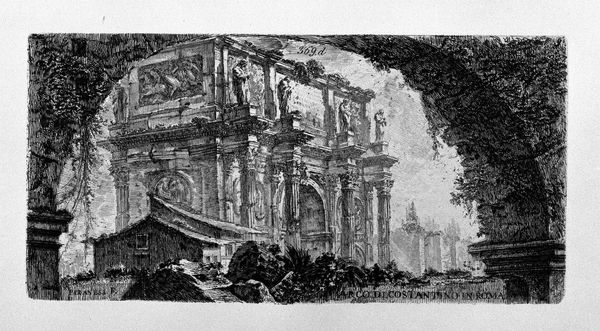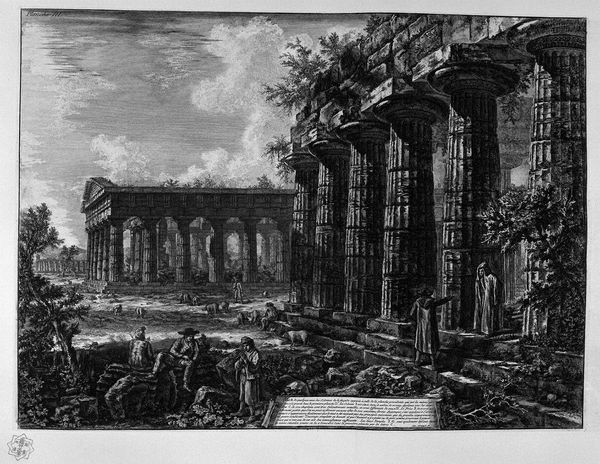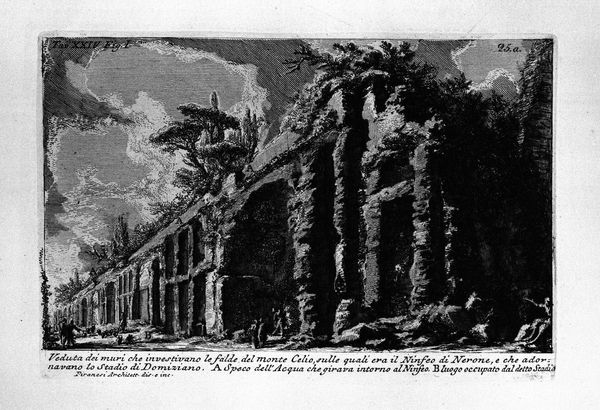
print, etching, engraving, architecture
# print
#
etching
#
greek-and-roman-art
#
landscape
#
charcoal drawing
#
romanesque
#
ancient-mediterranean
#
column
#
cityscape
#
history-painting
#
engraving
#
architecture
Copyright: Public domain
Curator: Welcome. Today, we’re looking at "Perspective of the ruins of the aqueduct," an etching by Giovanni Battista Piranesi. Editor: Immediately striking is the immense scale portrayed and how insignificant the human figures seem against this backdrop of architectural decay. There's a potent sense of time's passage and a commentary on civilization’s impermanence. Curator: Piranesi was fascinated with the grandeur of Roman antiquity, and his prints played a crucial role in shaping the 18th-century view of Rome. This particular piece is an excellent example of his vedute, or "views," capturing both the historical weight and the physical presence of Roman structures. Editor: But it's more than just a factual depiction. The composition feels manipulated, amplified, maybe even theatrical. I'm intrigued by this romantic portrayal that seemingly highlights the idea that all empires eventually decline, don’t you think? Curator: Piranesi wasn't simply recording history, but constructing a powerful visual narrative. These prints became commodities in a booming market for Grand Tour souvenirs, catering to the desires of wealthy Europeans seeking authentic experiences and souvenirs of the past. This inevitably links the work to consumption and to some extent capitalism. Editor: Precisely, and in a way, the image reflects not only on ancient Roman power but also on the colonial gaze, the way European travelers of the time interpreted, possessed, and even commodified other cultures. What would you say about his method? I am truly impressed by this level of detailing in a simple engraving medium! Curator: Piranesi was a master etcher, and this work displays the extraordinary skills for which he was celebrated. His technique involved using multiple bites of acid to create varied line weights and a complex range of textures. His use of perspective is remarkable in emphasizing scale and depth. He strategically places light and dark to create a drama, which can almost be characterized as staged! Editor: Yes, absolutely! Well, reflecting upon this work, I am led to meditate about how it reflects not only on past empires, but how our present will be observed as ruins from an uncertain future. Curator: Absolutely. Piranesi gives us not just a document of Roman architecture, but a space to confront history and our place within its ongoing narrative.
Comments
No comments
Be the first to comment and join the conversation on the ultimate creative platform.

